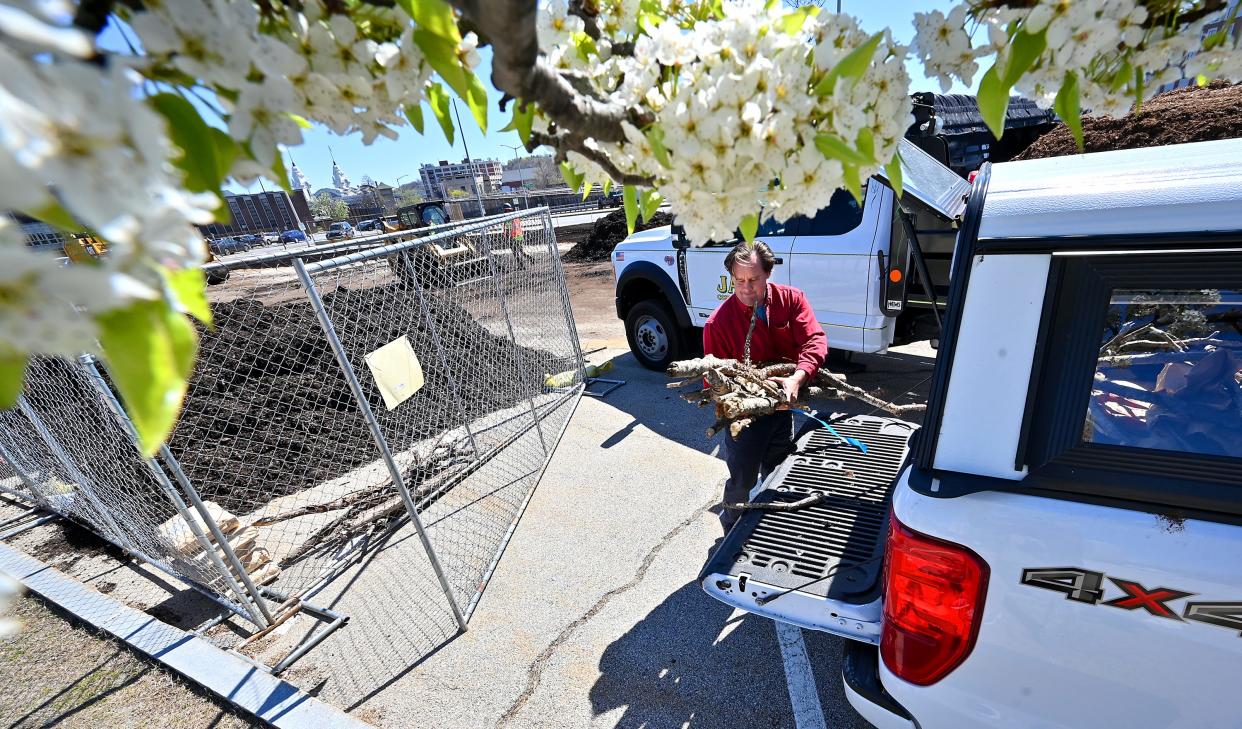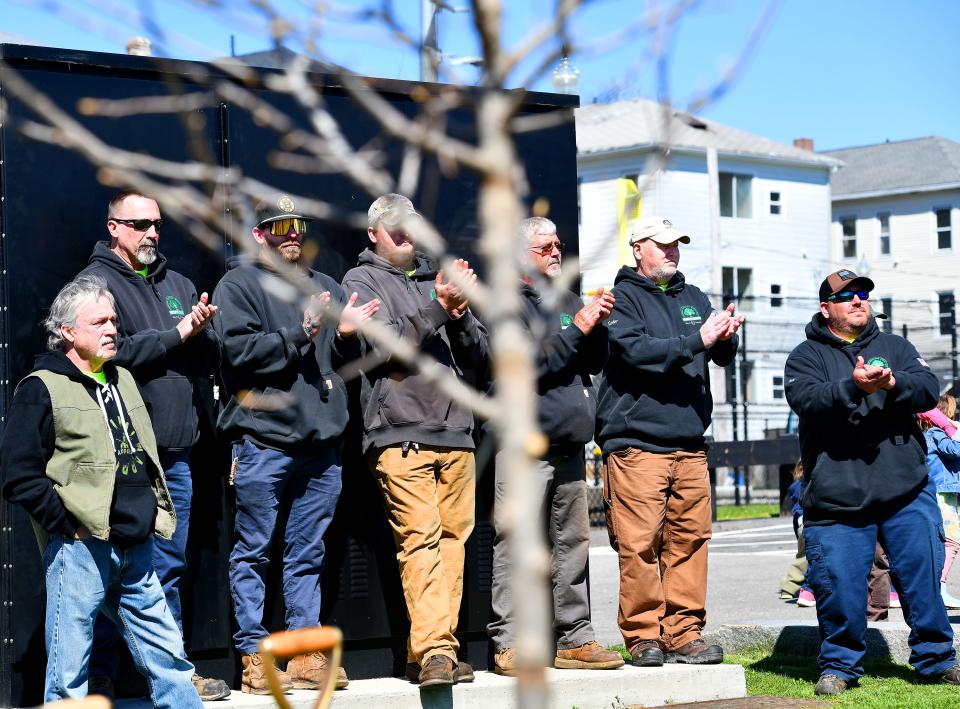Public invited to planting for Worcester's first Miyawaki forest Saturday near library

- Oops!Something went wrong.Please try again later.
WORCESTER — Saturday marks a milestone in Worcester’s environmental history.
The public is invited to start planting trees, shrubs and bushes for the city’s first Miyawaki forest from 10 a.m. to 2 p.m. along McGrath Boulevard, behind the Worcester Public Library at Salem Square.
Crews spent a few days this week excavating a section of the McGrath parking lot to make room for planting.
If you can’t make it Saturday, the public is invited back for a second round of planting from 1 to 3 p.m. and 3 to 4:30 p.m. May 11. Those times coincide with the inaugural Green Worcester Summit held at the library.
Miyawaki forests are named for the late Japanese botanist Akira Miyawaki, who developed a method of planting species in neglected urban plots. A second Miyawaki forest will be planted at Plumley Village Apartments, 16 Laurel St. Public plantings will happen there from 4 to 6 p.m. May 1 and from 10 a.m. to noon May 18.
Both sites are in urban heat islands, where there is an abundance of concrete and few trees to lower temperatures on hot days. The city also targeted the forests in environmental justice communities that generally have a preponderance of low-income residents of color with varying levels of English-speaking proficiency.
These are small forests: 6,400 square feet at McGrath and 8,000 square feet at Plumley. They naturally mesh with the local soil and climate, and they're expected to become self-sufficient after a brief period of maintenance by city crews.
They're also touted to fight climate change by sequestering carbon dioxide and absorbing rainwater to help prevent flooding during intense storms. Originally, the city wanted to plant seven Miyawaki forests over two years but didn’t get the $1.6 million grant it needed from the state to pay for much of the work.
What the city got was a $400,000 state grant, and it requires that both forests are finished by June 30. The funds also covered the design costs of two “cool pockets” where people can relax on a hot day. Sites selected by the city include Columbus Park Elementary School and the Vernon Hill Playground between Vernon and Providence streets.
When the design work is done, the city plans to look for state and federal grants to cover construction costs of the pockets.
Meantime, elsewhere in the city, officials marked Arbor Day on Friday with the planting of two black gum trees at Mulcahy Field.

This article originally appeared on Telegram & Gazette: Public invited to planting for Worcester's first Miyawaki forest

